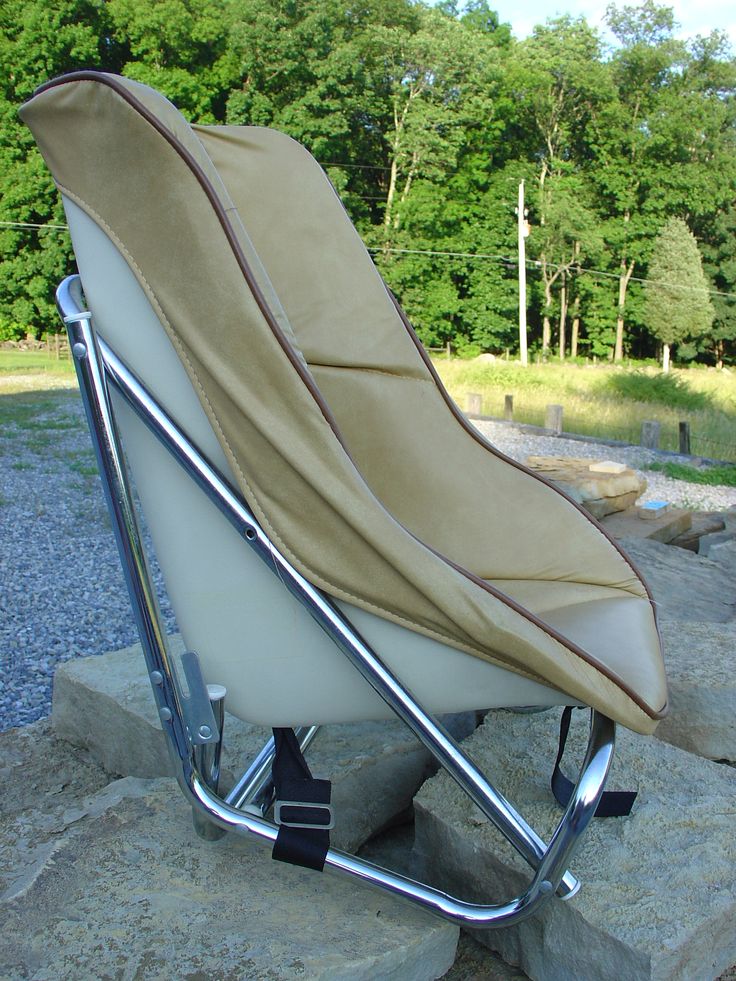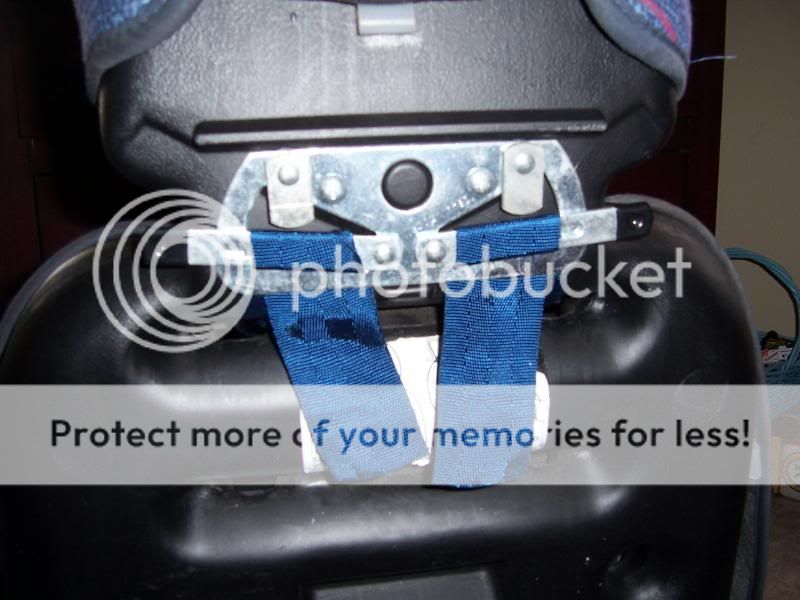I meant to reply to this thread sooner however regrettably I couldn’t find the time – I hope it is ok to answer a thread which is two weeks old!
How did older car seats fasten and tighten? I have heard several folks in my parents' generation say that today's car seats are complicated and "new fangled."
Installation methods in the UK (and some European Countries) were very different from those in US. Aside from the earliest car seats designs which literally hung on the vehicle seat back, most installations from the mid-1960s onwards involved some kind of permanent modification to the vehicle; most commonly drilling into the vehicle to install mounting points for “fitting kits.” Once the fitting kit had been installed, the seat was then attached to the kit itself.
The upside to these designs was twofold and they remained standard for some years. First, seats proved easily interchangeable between vehicles. Fitting kits could be purchased separately for installation in another car thus allowing the use of one seat for multiple cars. Parents could simply unclip the seat (usually two or four attachment points) and simply clip it into another car. Second, this made car seats much more financially economical for parents as they were only required to purchase one seat and fitting kits cost considerably less than a seat; in most cases only about 15-20% of the cost the seat[1]. Below are some photos of these fitting kits.
Jeenay Fitting Kit circa 1971:
Kangol Fitting Kit circa 1985:
Nonetheless, by nature this system allowed significant scope for unsafe and inconsistent installations. Foremost, installation required the dismantling and rebuilding of certain parts of the family car. This process could be long and complex often taking “half a day or longer.”[2] Many instruction leaflets required the installer to check for “no obstructions (ie) petrol tank, brake pipes, etc”[3] and to insure loose webbing and straps were stowed to avoid the moving parts of the vehicle[4]. Sometimes installation could require the cutting or sawing of bolts to the correct length and the fitting of “anchor plates” to strengthen the metal area to which the seat was secured[5].
In 1971 an article in Autocar magazine cautioned:
“Allow 1-2 hours for the complete job. It can be done in less, but you may hit a snag somewhere. You will need the help of an assistant to hold the non-captive bolt as you start to thread on its nut, and to check if the ferrule is correctly aligned as you tighten up.”[6]
While sensible in many ways, these warnings made some parents reluctant and/or lowered their confidence to carry out the procedure. In a 1977 report by the Automobile Association of Great Britain many stated that the job was “fiddly and difficult”[7]. The same article also stated that after surveying the installations of various child seats at random more than half were “potentially dangerous” and also that “in almost every instance, they had not been mounted in accordance with the manufacturers instructions.”[8]
Furthermore, the range of fitting kits varied widely. The purchaser had to decide whether to use an OEM or aftermarket product, whether it was required for a saloon car or estate car (wagon) and if different child seats were involved whether a so called “universal design” (which supposedly could fit any model car and version of restraint) was necessary. There were also “conversion kits” available if required[9].
Moreover, many cars of the period were without designated points designed for securing car seats (or even rear seat belts). Rear child restraint anchorage points did not become a legal requirement in the UK until April 1982. Even as late as 1987 some parents stated that the installation of car seat fitting kits “was virtually impossible”[10] in their family car and that upon discovery of a seat which utilised the adult belt for installation (the Britax Babysafe) they “became very enthusiastic” because it had “freed” them from having to operate a “specially equipped vehicle for transporting baby”![11]
Additionally the risk of installing a restraint incorrectly was sometimes exacerbated by complicated or poor instructions (something which is still occasionally encountered today). As child seats were a relatively expensive item many chose to purchase used seats. Such seats often came without instructions resulting in improvised and often haphazard installations[12].
Having said this, it is very important to note there were of course many thousands (perhaps millions) of installations carried out correctly by parents and garages at the time and these clearly helped to reduce the number of child injuries and fatalities on the roads. In spite of the inherent problems, it is important to remember how much progress was being made.
Fitting Kit straps attached to Jeenay "Supersafe" Seat (late 1980s):
Fitting Kit straps with Kangol "Dreamseat" (1985):
In particular, they seem flummoxed by how to get the harness buckled and tightened. Not having any experience with car seats that aren't a 5-pt harness with a tail to tighten, I have no idea what they're talking about. So how did older car seats work?
HARNESS ADJUSTERS
The first car seats in the UK to have some kind of harness system appeared in the early 1960s. The straps were adjusted with bar slides outside the shell which had slots through which the belts passed. The two biggest seat manufacturers of the 1960s both employed this method of adjustment; Britax on the “Star Rider” and Jeenay on their “Child Seat”.
At the beginning of the 1970s both changed to having adjusters positioned directly on the harness straps, presumably because it was clearly much simpler for parents to have access to the adjusters while the seat was installed, rather than having to remove the seat every time an adjustment was required.
At first these adjusters were standard bar slides but soon became “one-pull” locking slides similar to those found on backpack shoulder straps today (only much more substantial!). Before the modern style of car seat harness was designed each strap was essentially independent and thus each required its own adjuster. Clearly another step in terms of product ergonomics, this design still had shortcomings, most obviously that it made the harness rather ‘bulky’ so to speak, particularly on smaller seats.
This problem was eventually solved with the “integral harness” which utilised one adjuster for one or more parts of the harness which is the design used today. For manufacturers this design was cheaper, for parents quicker and easier to use and for children likely more comfortable. One the first seats to use this design was the Kangol “Dreamseat” which went on sale in 1984. The lap portions of the harness were actually formed on one piece of webbing which ran beneath the seat itself and used only one adjuster. This system evolved in the early 1990s and became the standard system used today.
BUCKLES
With regard to buckles the earliest design was the “hook and pin” design. This appeared on the very first Jeenay seat in 1962. Each end of the harness straps had a metal eyelet in which a hook was passed through. The buckle was then secured by a corresponding metal pin which was inserted through the open hook. Unfortunately, I have never seen an original Jeenay seat for sale however this press release photo from 1962 shows the design:
(Please note I have the manufacturer’s permission to post this image)
Shortly after, Britax came up with an entirely different design which consisted of two large D-rings and a rotating bar. Each D-ring was placed into a slot on the carrier which was sewn to the crotch strap. The bar then rotated above the slots through 90 degrees to keep them in place. As the D-rings were sewn onto both waist and shoulder straps, it was not completely dissimilar to modern buckles.
1960s Britax buckle design from a "Star Rider Seat":
Another noteworthy buckle design was that of “Guardian Angel” products who used a “cam buckle” as a fastening mechanism on their child harnesses. While the company did not last this system is essentially exactly the same as the adjustment buckle used today on all 5-point harness seats. The fastening was a basic cam lever which when closed clamped the strap between two surfaces under pressure. Today the mechanism closes by spring loading rather than a manual lever but apart from that there is little difference.
In the 1970s the more familiar ‘push-button’ style buckle appeared due to parents’ complaints that the rotary style buckle could come unlatched and sometimes get jammed[13]. Initially both Britax and Jeenay engineered their seats to have the buckle sewn onto one side of the harness which then connected to other side of the harness onto which the tongue was sewn. The crotch strap connected independently. While both designs were similar, Jeenay placed the release button on the side of the buckle while Britax utilised a central button design:
Britax Buckle which became a standard feature of their products in late 1970s:
Early 1970s KL Jeenay buckle seen on a "B" model seat:
Late 1980s Kangol/Klippan/ASE buckle design:
Eventually this was replaced by having the buckle permanently fixed to the crotch strap rather than other belts. This redesign was very important as it ensured that all parts of the harness were used at all times resulting in safer use of the seat. With the previous design it was possible to buckle the harness using only the waist and shoulder straps thus increasing the risk of submarining.
I’ll leave it there as this post is now very long! I hope people find this interesting.
- - -
[1] Information complied from a variety of catalogues and manufacturer price lists from the 1960s to 1980s.
[2] Roy Johnstone, ‘Are Your Breakables As Safe As You Hope?’, Drive, April 1977, (p28-33), p.31
[3] Instruction Leaflet, KL Jeenay B24 Seat, p.2
[4] Instruction Leaflet, Kangol/ASE UK Ltd, No. 18-72920
[5] Instruction Leaflet, KL Jeenay B24 Seat, p.2
[6] [Unknown Author], “Autocare: Fitting a child safety seat”, Autocar, 4 November 1971, p.56
[7] Roy Johnstone, ‘Are Your Breakables As Safe As You Hope?’, Drive, April 1977, (p28-33), p.31
[8] Ibid., p.28
[9] [Unknown Author], ‘Protecting the Children: Harnesses and Seats’, ????
[10] Beverley & Stephen Hardy, ‘Belt Up All Round’, VW Motoring, November 1987, (p29-31), p.29
[11] Ibid.



























